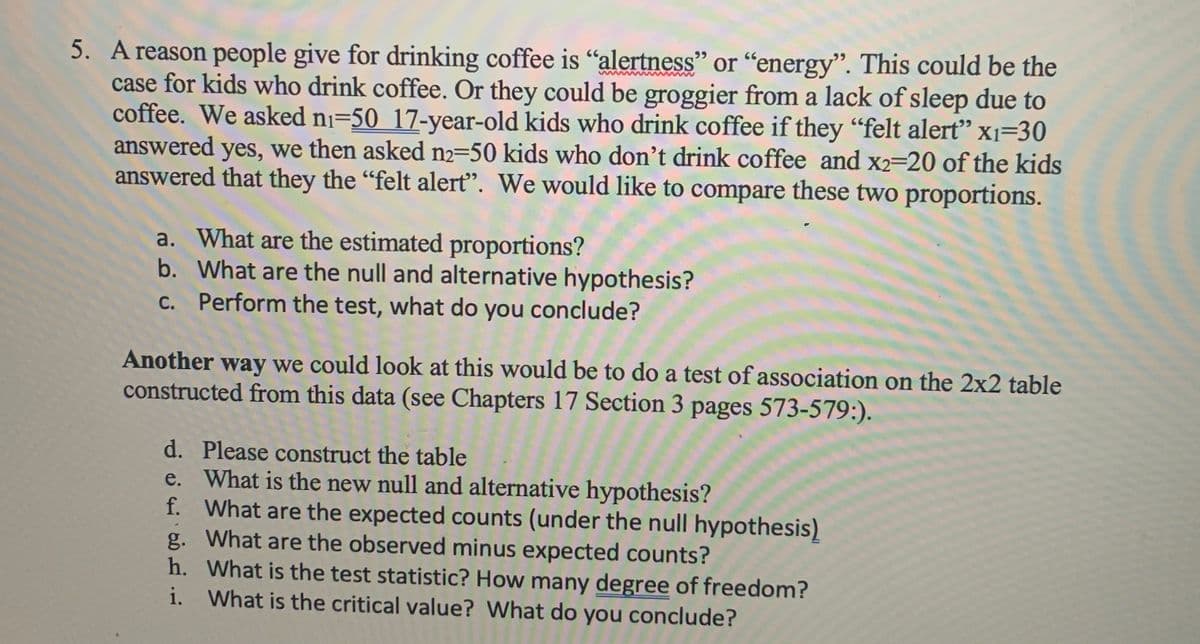d. Please construct the table e. What is the new null and alternative hypothesis? f. What are the expected counts (under the null hypothesis)
d. Please construct the table e. What is the new null and alternative hypothesis? f. What are the expected counts (under the null hypothesis)
Trigonometry (MindTap Course List)
8th Edition
ISBN:9781305652224
Author:Charles P. McKeague, Mark D. Turner
Publisher:Charles P. McKeague, Mark D. Turner
Chapter1: The Six Trigonometric Functions
Section: Chapter Questions
Problem 1RP: Although Pythagoras preceded William Shakespeare by 2,000 years, the philosophy of the Pythagoreans...
Related questions
Question
Subpart d e f

Transcribed Image Text:5. A reason people give for drinking coffee is "alertness" or "energy". This could be the
case for kids who drink coffee. Or they could be groggier from a lack of sleep due to
coffee. We asked ni=50 17-year-old kids who drink coffee if they "felt alert" x1=30
answered yes, we then asked n2-50 kids who don't drink coffee and x2-20 of the kids
answered that they the "felt alert". We would like to compare these two proportions.
a. What are the estimated proportions?
b. What are the null and alternative hypothesis?
c. Perform the test, what do you conclude?
Another way we could look at this would be to do a test of association on the 2x2 table
constructed from this data (see Chapters 17 Section 3 pages 573-579:).
d. Please construct the table
e. What is the new null and alternative hypothesis?
f. What are the expected counts (under the null hypothesis)
g. What are the observed minus expected counts?
h. What is the test statistic? How many degree of freedom?
i. What is the critical value? What do you conclude?
Expert Solution
This question has been solved!
Explore an expertly crafted, step-by-step solution for a thorough understanding of key concepts.
Step by step
Solved in 3 steps with 2 images

Knowledge Booster
Learn more about
Need a deep-dive on the concept behind this application? Look no further. Learn more about this topic, statistics and related others by exploring similar questions and additional content below.Recommended textbooks for you

Trigonometry (MindTap Course List)
Trigonometry
ISBN:
9781305652224
Author:
Charles P. McKeague, Mark D. Turner
Publisher:
Cengage Learning

Trigonometry (MindTap Course List)
Trigonometry
ISBN:
9781305652224
Author:
Charles P. McKeague, Mark D. Turner
Publisher:
Cengage Learning